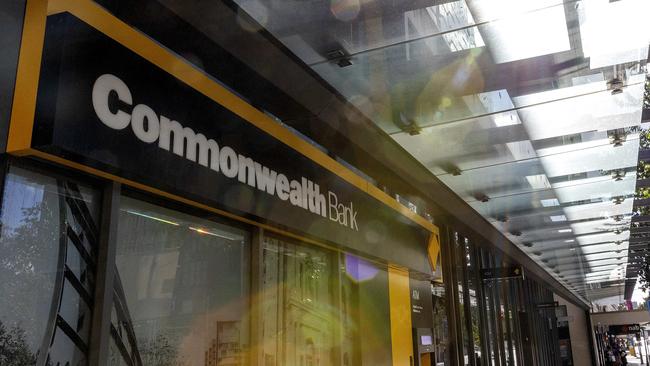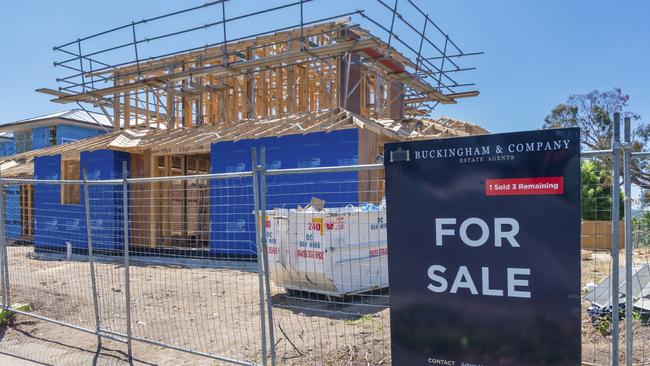Commonwealth Bank faces pressure over its sustained home loan market share losses
Pressure is mounting on CBA to move to defend its position by offering lower interest rates to new customers.

Pressure is mounting on Commonwealth Bank to defend its position in the home loan market, after it recorded several months of market share losses, by offering lower interest rates to new customers.
The latest statistics released by the Australian Prudential Regulation Authority on Tuesday show home lending by the nation’s largest bank has shrunk for three consecutive months, the first time since at least 2002.
According to an analysis of data by Jefferies, the bank lost 11 basis points in market share in September.
“They’ve lost 45 basis points in four months. That’s significant,” said Jefferies banking analyst Matt Wilson.
“They’ll be thinking about how this will look in their first half results, which they’ll release in February.

“As they plan their end-of-year run, they’ll want to address this loss.
“No bank likes to lose market share. It was very clear from the CBA chairman’s comments at their AGM recently that they don’t like to lose market share.”
The bank is not expected to reintroduce generous cash-back offers for new customers to regain market share, after it led the way in withdrawing them because they were eroding margins. The more likely move would be to offer higher discounts on its home loan rates, a move that would likely put pressure on margins of all banks and could help push property prices higher.
At any rate, “there’s likely to be a competitor response from CBA”, said UBS banking analyst John Storey. “There are ultimately so many levers banks can pull. Obviously the most immediate one in our view is definitely around price,” he said.
“So they can price a little bit more sharply.”
Based on APRA’s latest statistics, UBS calculates that CBA had a 25.4 per cent market share of the mortgage lending market at the end of September, down from 25.9 per cent in May.
The regulator’s statistics are delayed by a month.
Conversely, and perhaps not surprisingly, banks that have been prepared to maintain cashback offers for new customers – ANZ and Westpac – continue to add market share.
Westpac now has 21.4 per cent of the mortgage lending market, up from 21.2 per cent in May, UBS data shows. ANZ, meanwhile, has grown its share of the pie to 13.4 per cent, up from 13.3 per cent in the past four months.
But the gains in market share are likely to mean lower margins for banks.
Analysts at JPMorgan estimate Westpac’s and ANZ’s share gains in mortgages will be a “headwind” to the margin of their retail bank units when they unveil full-year results on November 6 and November 13 respectively.
CBA’s financial calendar is not aligned with the rest of the big four banks.
At its annual result in August, the bank showed net interest margins – the difference between what the bank earned on loans and what it paid for funds – fell 5 basis points in the second half of the year.
The Sydney-based lender is due to release a trading update for the first quarter of fiscal 2024 on November 14.
And competition is not the only factor putting pressure on bank earnings.
They are also facing higher funding costs as a result of higher rates as the juicier interest rates available to savers elsewhere are forcing banks to pay more for deposits.
“We expect higher interest rates for longer as inflation remains stickier,” says Mr Wilson.
That means there are downside risks to the bank’s net interest margins, a key measure of profitability, “from both sides of the balance sheet”.
That is pressure from “competition on the asset side” and from “behaviour change on the liability side, as savers rationally seek to bank higher yields by migrating deposits out of low and no-interest earning accounts.”
CBA shares underperformed the market on Tuesday, inching 0.35 per cent higher to close at $96.56, while ANZ shares rose 0.65 per cent to $24.71.
Westpac shares gained 0.68 per cent to $20.60 each, and National Australia Bank gained 0.61 per cent to $28.05.




To join the conversation, please log in. Don't have an account? Register
Join the conversation, you are commenting as Logout